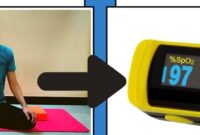The breathing technique for running is well cared for and must be done correctly. You will get the maximum benefit from this exercise with proper breathing techniques.
Not only tiring, but running can also be an exercise that helps maintain maximum body fitness.
The following is a review of the breathing technique for running that should be used.

Best breathing technique for running
If you’re used to the breathing technique for running by breathing in through your nose and out through your mouth while running, it’s a good idea to change. While this breathing technique is highly recommended in yoga and some martial arts, it is not recommended for running. It’s okay, but this breathing technique is not the best and is recommended for high-intensity aerobic exercise such as running.
Instead, you have to breathe through your mouth and nose while running simultaneously. It is because muscles need oxygen to continue working correctly. Breathing through the nose alone is not enough to provide the body with its oxygen. You need mouth living to take in more of the oxygen you need.
Exhale to the maximum, do not be half-hearted to release even more carbon dioxide. It will help you to take deeper breaths. Using proper breathing techniques while running will not be quickly out of breath and out of breath.
Use the belly breathing technique

When running, use abdominal or diaphragmatic breathing techniques, not from the chest.
Abdominal breathing makes you take in more air than chest breathing.
Breathing techniques can make you feel like you are choking from not getting enough air.
According to John Henwood, a running trainer in New York, belly breathing allows you to breathe more deeply. It will make your body relax and focus while running.
Try practising it before running if you still have trouble and don’t understand belly breathing.
An easy way to do this is to lie on your back. Position yourself in a relaxed position with your shoulders resting on the floor or mattress. When you breathe in, let your stomach rise and when you exhale, let your belly go down.
Then in a standing condition, you can practice it while standing up straight. Make sure your posture is straight, with your shoulders frankly and straight ahead. The position of the head should also be parallel to the body, not leaning too forward. It is because you will not be able to take a deep breath if your body is bent over.
Next, inhale through your nose and feel your stomach rising. Then, exhale through the mouth with the stomach back flat or down. You can try this technique by placing your hands on your belly to make it easier. Then feel the ups and downs.
When the stomach expands, the diaphragm moves downwards to make room for the lungs to fill with oxygen.
Later, when running, take a breath from the mouth and nose simultaneously to get more oxygen intake. If you can do it in a still state, try to practice slowly while running and feel the difference.

To make it easier for you to practice breathing techniques for running, try to start running at a pace that makes it easier to breathe.
Then, use the “talk test” to see if your steps are appropriate.
You should be able to speak complete sentences without gasping for air. The point is, don’t push yourself. Slow down your running or walking if you feel out of breath.
Important things besides breathing techniques for running
Out of breath while running can trigger a condition called hypoxia or hypoxia, which is a disorder that occurs when the body’s tissues have oxygen levels that are below normal limits. The cause of this condition is oxygen levels in the blood that are lower than they should be or known in medical terms as hypoxemia.
According to the Cleveland Clinic, a person with hypoxaemia will experience several symptoms, including:
- headache,
- hard to breathe,
- fast heart rate,
- cough,
- confusion, and
- the blueness of the skin, nails, and lips.
Headaches, dizziness, and nausea are common symptoms of hypoxia which will disappear within a few minutes of your breathing returning to normal. If symptoms continue to appear or are more severe even after breathing has recovered, see a doctor immediately for further treatment.
[fcp-bfc-calculator]




